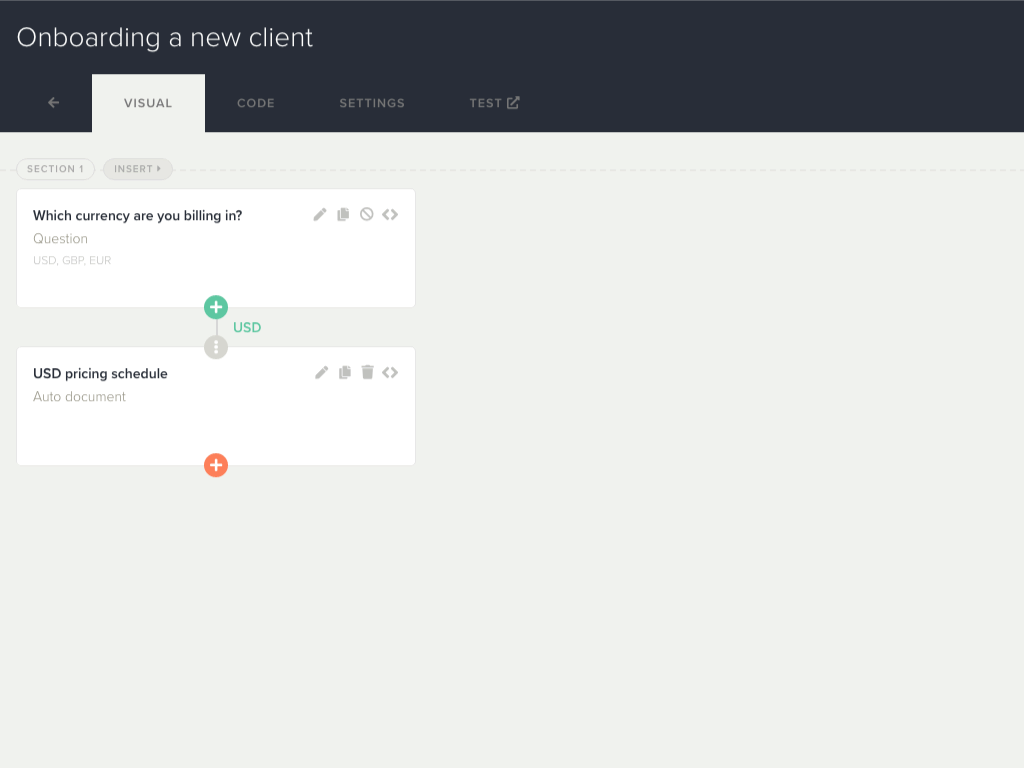Introducing workflows, actions and tasks
Workflows
Workflows are the backbone of the Plainly platform. Everything you/your users do - be it signing up a new customer, onboarding a new employee, buying an item of office equipment, leasing a property, engaging a new business partner, or anything else - can be guided by a predefined workflow.
Workflows map out your ideal process to achieve the outcome you want and then guide users through that process step-by-step. This ensures consistency and accuracy across your organisation, greatly speeds up routine tasks and creates meaningful and actionable data on business activity.
Actions

Each workflow is made up of a series of chained-together actions. Examples of actions would be creating a document and getting it e-signed, sending an email, asking a question, collecting a data point (e.g. price, currency, salary, etc), sending an SMS, and much more.
Actions can be completed one after another (i.e. in sequence), all at once (i.e. in parallel) or based on certain conditions (i.e. conditionally). For example, in a basic workflow to put in place a non-disclosure agreement you might first ask a question - 'Who must keep confidentiality?' and then, based on the answer, output a different document for each scenario.
Tasks

Each time someone starts a workflow, this is called a Task. Tasks sit under the 'Workspace' tab in each user's account, allowing them to see where they are on their tasks and what needs doing next.
Tasks are either completed (when all the relevant actions in that workflow are done), stopped (because there's no longer any need to complete the task) or deleted (because the task was started in error).